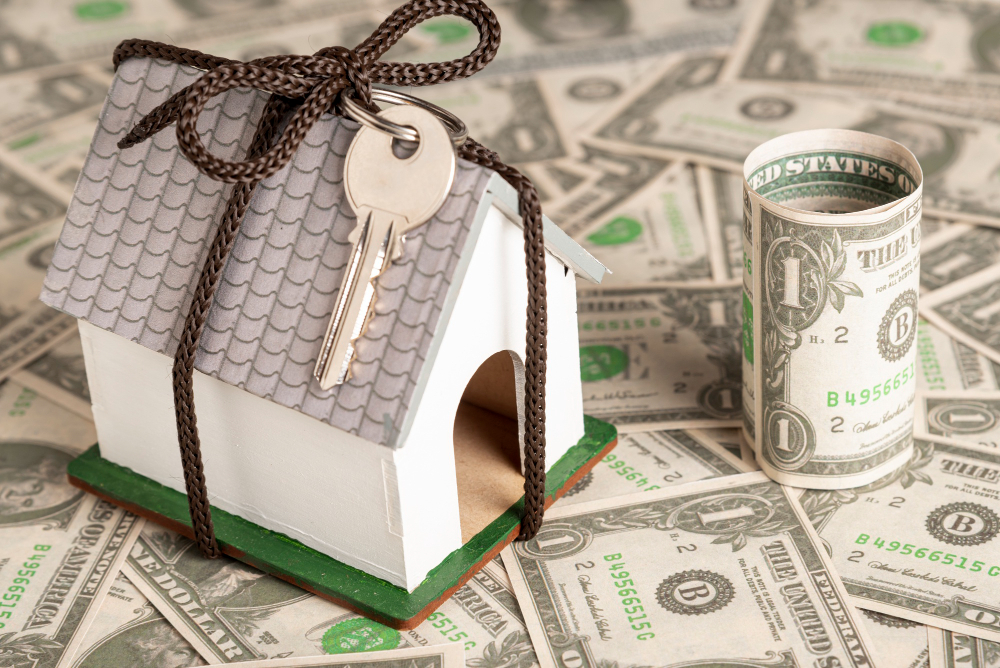Owning a home is a significant investment, and protecting it against unexpected events is essential. Home insurance provides financial protection against damage to your property and belongings, as well as liability for injuries and property damage to others. In this comprehensive guide, we’ll cover everything you need to know about home insurance, including types of coverage, factors that affect premiums, and tips for finding the right policy for your needs.
Understanding Home Insurance
Home insurance, also known as homeowner’s insurance, is a type of property insurance that covers losses and damages to an individual’s house and assets in the home. It typically provides coverage for the dwelling itself, personal property, liability protection, and additional living expenses if the home becomes uninhabitable due to covered perils.
Types of Coverage
- Dwelling Coverage
Dwelling coverage protects the structure of your home, including the walls, roof, floors, and foundation, against perils such as fire, windstorms, and vandalism.
- Personal Property Coverage
Personal property coverage protects your belongings, such as furniture, clothing, and electronics, against covered perils both inside and outside your home.
- Liability Protection
Liability protection covers you if someone is injured on your property or if you accidentally damage someone else’s property. It also includes legal defense costs if you’re sued.
- Additional Living Expenses (ALE)
ALE coverage reimburses you for additional living expenses if you’re unable to live in your home due to covered perils, such as temporary accommodation and meals.
Factors Affecting Home Insurance Premiums
- Location
The location of your home plays a significant role in determining your insurance premiums. Factors such as the risk of natural disasters, crime rates, and proximity to fire hydrants and fire stations can impact premiums.
- Home’s Age and Construction
The age and construction of your home affect insurance costs. Older homes may have higher premiums due to the increased risk of structural issues and outdated wiring, plumbing, and heating systems.
- Replacement Cost
The cost to rebuild your home in the event of a total loss influences your insurance premiums. Homes with higher replacement costs typically have higher premiums.
- Deductible Amount
The deductible is the amount you pay out of pocket before your insurance coverage kicks in. Choosing a higher deductible can lower your premiums but increases your financial responsibility in the event of a claim.
- Home Security Features
Installing security features such as deadbolt locks, smoke detectors, and alarm systems can lower your insurance premiums by reducing the risk of theft and fire damage.
Tips for Finding the Right Policy
- Assess Your Coverage Needs
Evaluate your coverage needs based on factors such as the value of your home and belongings, your budget, and your tolerance for risk.
- Compare Quotes from Multiple Insurers
Shop around and compare quotes from multiple insurance companies to find the best coverage options and rates. Consider factors such as coverage limits, deductibles, and customer reviews.
- Bundle Your Policies
Consider bundling your home insurance with other policies, such as auto or life insurance, to qualify for multi-policy discounts.
- Review and Update Your Policy Annually
Review your home insurance policy annually to ensure it still meets your needs and provides adequate coverage. Update your policy as needed based on changes to your home or lifestyle.
- Work with an Independent Insurance Agent
Consider working with an independent insurance agent who can shop around on your behalf and provide personalized recommendations based on your unique needs and budget.
FAQs
- What does home insurance cover?
Home insurance typically covers the structure of your home, personal belongings, liability protection, and additional living expenses if your home becomes uninhabitable due to covered perils.
- What perils are typically covered by home insurance?
Common perils covered by home insurance include fire, theft, vandalism, windstorms, hail, lightning, and damage from falling objects. It’s essential to review your policy to understand what specific perils are covered.
- What factors affect the cost of home insurance?
Several factors can affect the cost of home insurance, including the location of your home, its age and construction, the replacement cost, your deductible amount, and the presence of home security features.
- How much home insurance coverage do I need?
The amount of home insurance coverage you need depends on factors such as the value of your home and belongings, your budget, and your tolerance for risk. It’s essential to assess your coverage needs carefully and work with an insurance agent to determine the appropriate level of coverage.
- Can I save money on home insurance?
Yes, there are several ways to save money on home insurance, including comparing quotes from multiple insurers, bundling your policies, installing home security features, choosing a higher deductible, and reviewing your policy annually to ensure it still meets your needs.
- What should I do if I need to file a claim?
If you need to file a claim, contact your insurance company as soon as possible to report the loss. Provide detailed information about the damage or loss, and follow any instructions provided by your insurer. Your insurance company will guide you through the claims process and help you get the compensation you’re entitled to.
- What is the difference between replacement cost and actual cash value?
Replacement cost coverage pays to repair or replace your damaged property with similar items at current market prices, without deducting for depreciation. Actual cash value coverage, on the other hand, pays the cost to repair or replace your damaged property, minus depreciation.
- Can I cancel my home insurance policy at any time?
While you have the right to cancel your home insurance policy at any time, it’s essential to consider the consequences, such as leaving your home uninsured. If you’re switching to a new insurer, make sure you have coverage in place before canceling your current policy to avoid any gaps in coverage.
Conclusion
Home insurance is a vital component of protecting your property and financial well-being. By understanding the types of coverage available, the factors that affect premiums, and tips for finding the right policy, you can ensure that your home and belongings are adequately protected against unexpected events. Be proactive about reviewing and updating your policy regularly to ensure it continues to meet your needs as a homeowner. With the right coverage in place, you can have peace of mind knowing that your home is protected.


















